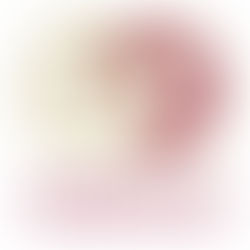Tutorial with Dave
Today's tutorial started off with Dave giving me some feedback on the recent two assessments: a) Design Research 2 - a written piece of work and b) Design Practice - based on my practical work and accompanying documentation.
a) Design Research 2:
I did okay on the essay even though my mark was considerably lower than my first essay. I thought that was a valid assessment. Though I could see the value of the required research involved, I was put off even before writing this essay by the (in my opinion) unrealistic demands of trying to make meaningful comparisons between ten different artist and their working practices and linking them to my own work and embedding these in an essay with introductions and conclusions within a word count of only 2,500 words. Brevity may not be my strong point and short concise writing is certainly an accomplished skill but doing what is required within 2,500 words seems impossible to me.
That said I'm of course open to criticism and these are the points I took on board from Dave's feedback:
Negative: Missing introduction, mostly marketing/sales based and not practice based, not enough parallels drawn to own practice and not visited any potters.
Positive: Managed to draw things from lectures given by people working in different areas of art and design.
b) Design Practice 1:
I was very pleased that all my hard work was reflected in a brilliant mark. Not that a grade is the important part of completing this MA. It is about the personal development but formal acknowledgement is not unwelcome. Dave was very complementary about both the quantity and quality of the work I achieved within one term.
The important outcome of the assessment of my work done so far is that I am basically on the right path to developing my own style of work which has scope to take me into the future.
Next:
Continue to make small test pieces to try out glazes, decorating techniques and clays – pinch pots will do well as they can may in future be sold in their own right (build a sectioned shelf to display them for Earth & Fire next year).
Continue to hand build a few larger pieces – keep coiling and possibly adding pinched sections. Think of varying the scale, i.e. more elongated and not as rounded and compact and, possibly, larger.
Use experience of the three existing pieces and pick out decorative details that work, e.g. white design liner on black clay without any glaze or where the black design liner fuses with the glaze.
Generally try to make the patterns an integral piece of the whole form: not too busy or fussy patterns, avoid design liner sitting on top of glaze (awkward lines), encourage decorative patterns to fuse with the glaze maybe even encourage some running, patterns should echo and have a relationship with the form.
These are areas for me to research and explore:
Glazes:

Chinese Sung dynasty Celadon with very cool blues and turquoises.
Try Fake Celadon that fires in oxidation so I won’t need to gas kiln to carry on.

Tang glazes with their runny qualities.

Japanese Oribe ware and how the oxide decorations mix with the obscuring glazes.

English slipware with lead glazes: white slip on red clay use fingers, create different thicknesses and marks before going in with detailed decorations – time saving.
Clays:
Try to find a suitable white clays for hand building.
If using Valentine black clay combine it with varying thicknesses of Parian slip but let clay dry out before applying slip at dry leather hard to bone dry state.
Try out the red clay that Katie T. uses – as it is really nice for hand-building: Valentines PF695 (is similar as their medium black clay in feel)
Patterns:

Move on from Pueblo and geometric Islamic patterns to other pattern families such as e.g. Iznik/Ottoman floral patterns.
Think of varying scale, i.e. also have bold larger patterns.
Use a projector to project geometric Islamic patterns onto pieces to trace them – nice possibility of interesting distortions.
I am looking forward to moving on to the next stage now.

















